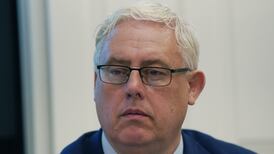A baby girl who was close to dying from cancer has been rescued by a cell therapy envisioned as a “one size fits all” treatment that had never been tested in people, doctors reported on Thursday.
The girl, Layla Richards of London, had acute lymphoblastic leukaemia. Doctors tried the usual chemotherapy, a bone marrow transplant and a new type of biotech drug, but nothing worked.
The new treatment is significant because it indicates that cell therapies might not have to be customized for each patient, saving time and money.
It also represents one of the first times that a novel "genome editing" technique has been used to treat a patient. The therapy was developed by Cellectis, a French biotechnology company.
But it is hard to say much based on one patient. Also, the girl has been in remission for only a few months, too little time to say she has been cured, said Waseem Qasim, one of the doctors who treated her at the Great Ormond Street Hospital in London.
Still, the girl’s doctors “think it is a remarkable outcome,” because she had not been helped by conventional therapies, Dr Qasim said in an interview.
Cancer doctors have been using a new approach that involves genetically altering patients’ T cells, the soldiers of the immune system, so that they can better attack cancers. Some patients with certain blood cancers have made remarkable recoveries.
The first versions of their experimental therapies require extracting the T cells from the patient, shipping them to a manufacturing plant where they can be altered, then sending them back and putting them back into the patient, something that will be logistically challenging and costly for thousands of patients.
Layla did not have enough T cells to allow doctors to extract them and make a personalized therapy.
The new therapy therapy is meant to work for any patient with a particular type of leukaemia.
Palliative care
The girl's parents, Ashleigh Richards and Lisa Foley, were counselled to consider palliative care to keep her comfortable until she died, Dr Qasim said, but they were not willing to do that. The hospital was already manufacturing Cellectis' cells in preparation for clinical trials.
“We had them in our freezers,” Dr Qasim said. He is also a professor at University College London, which worked with Cellectis on the treatment.
Layla became the first person to receive the treatment, on what is sometimes called a compassionate use basis. After getting the cells around the time of her first birthday in June, Layla went into remission, with no trace of leukaemia found in her blood or bone marrow.
She later had a second bone marrow transplant to help her immune system recover and is now at home.
Cellectis’ therapy uses T cells from a healthy donor that are first modified to target leukaemia cells. But to make its treatment “universal” Cellectis then uses genome editing. This involves using molecular “scissors” to make precise changes to DNA.
The case of the girl’s recovery will be presented to doctors next month at the annual meeting of the American Society of Hematology in Orlando, Florida.
New York Times









